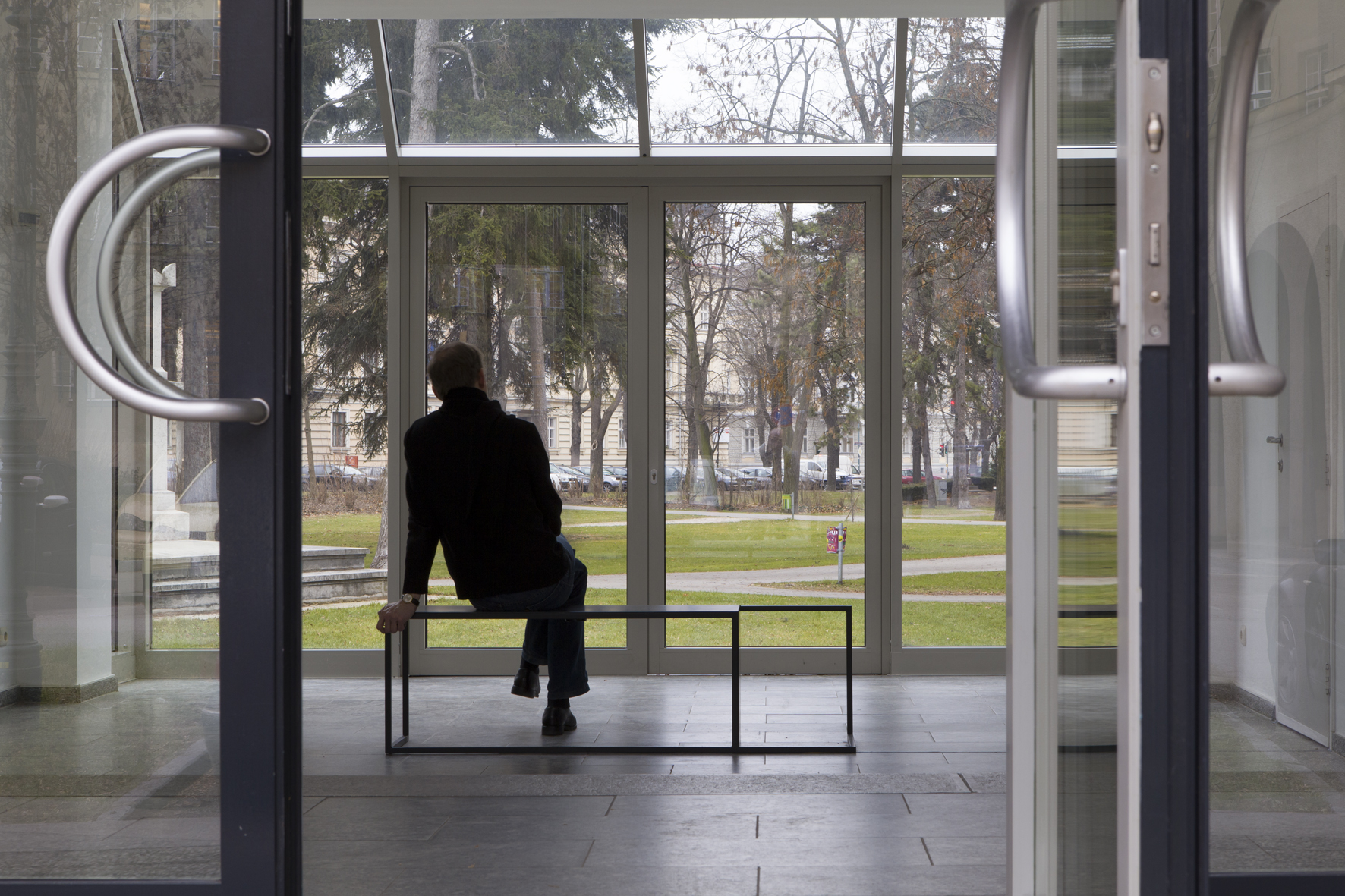Visitors hear a voice speaking, and in the center of the room is an empty frame-like platform, like a bench or a plinth turned on its side. The unseen narrator seems to have lost something, but he is unable to accurately describe it, and he is also unable find the place in the forest where he thinks to have last seen it. The more he tries to explain the object to the listener or tries to “find” it with words, the more the object described seems to shift and change. The Findings addresses the dislocation of an object, the ontological status of which is unclear and in a state of change. The work interrogates the efficacy of linguistic signification, or rather its inefficacy or imprecision. The signifier and the signified apparently fail to connect and the object seems to be dramatized by this semantic shift. This divergence becomes the true object of the work. The mental apparatus of the viewer/listener becomes a “projector” of images and ideas; the attentive mind attempts to mold an object of imaginary dimensions, which it remains unable to firmly grasp.
The dual aspects of the object’s absence and its indistinct nature are underscored by the transience and immateriality of auditory space. Sound, tone, and voice, intrinsically fleeting medial phenomena, create the presence of absence. The viewer/listener follows the narrator on their search without knowing whether the signifiers that the narrator attempts to describe and name are clues and hints or whether they refer to the past or the future. Searching and finding, perception and imagination are melded into an inseparable, multi-valent relationship.
- from the essay by David Komary, director Galerie Stadtpark
The dual aspects of the object’s absence and its indistinct nature are underscored by the transience and immateriality of auditory space. Sound, tone, and voice, intrinsically fleeting medial phenomena, create the presence of absence. The viewer/listener follows the narrator on their search without knowing whether the signifiers that the narrator attempts to describe and name are clues and hints or whether they refer to the past or the future. Searching and finding, perception and imagination are melded into an inseparable, multi-valent relationship.
- from the essay by David Komary, director Galerie Stadtpark
The Findings (Stadtpark)
2014
mixed-media installation with multi-channel sound and sculpture


installation views: Galerie Stadtpark, Krems, Austria